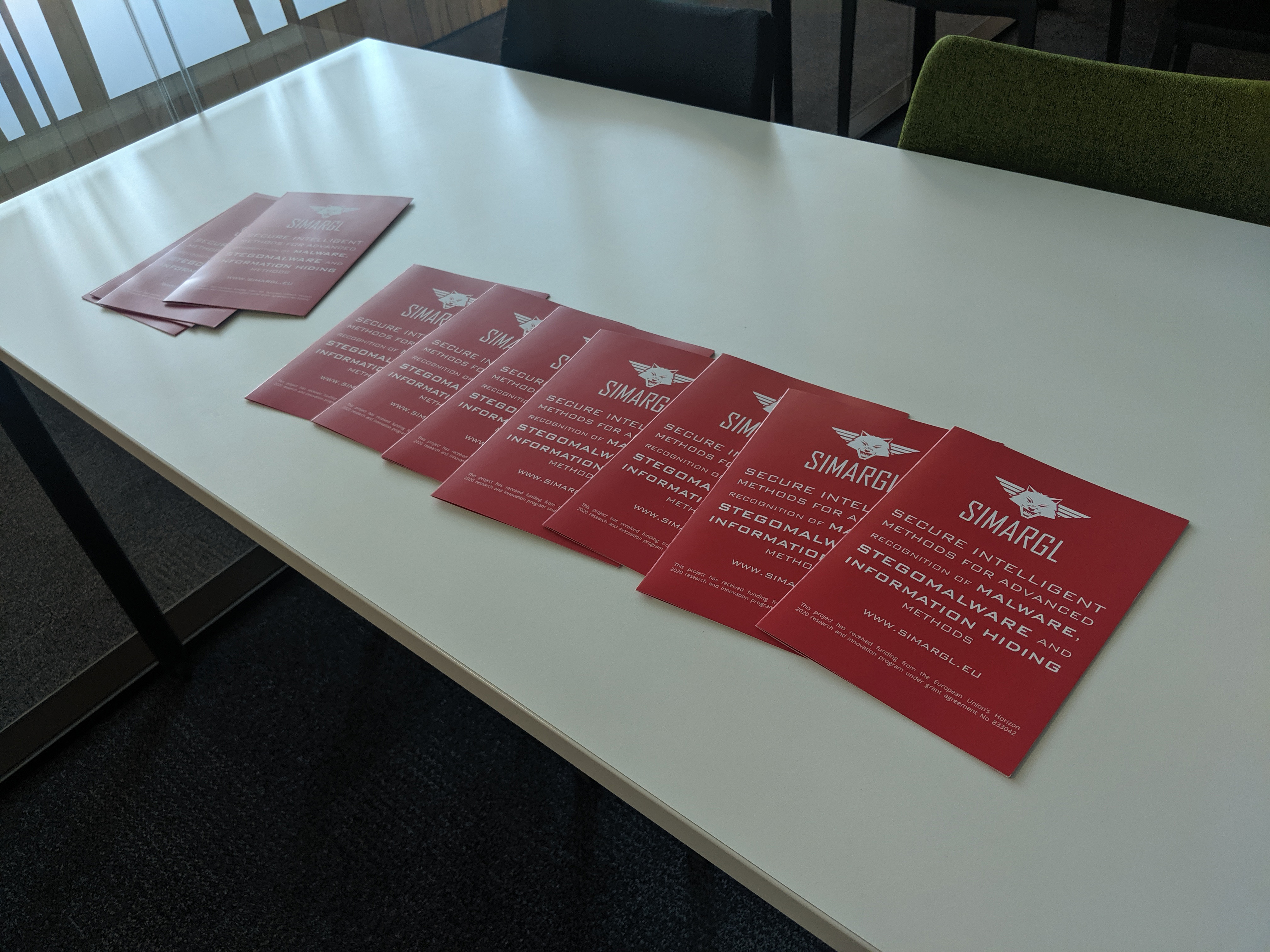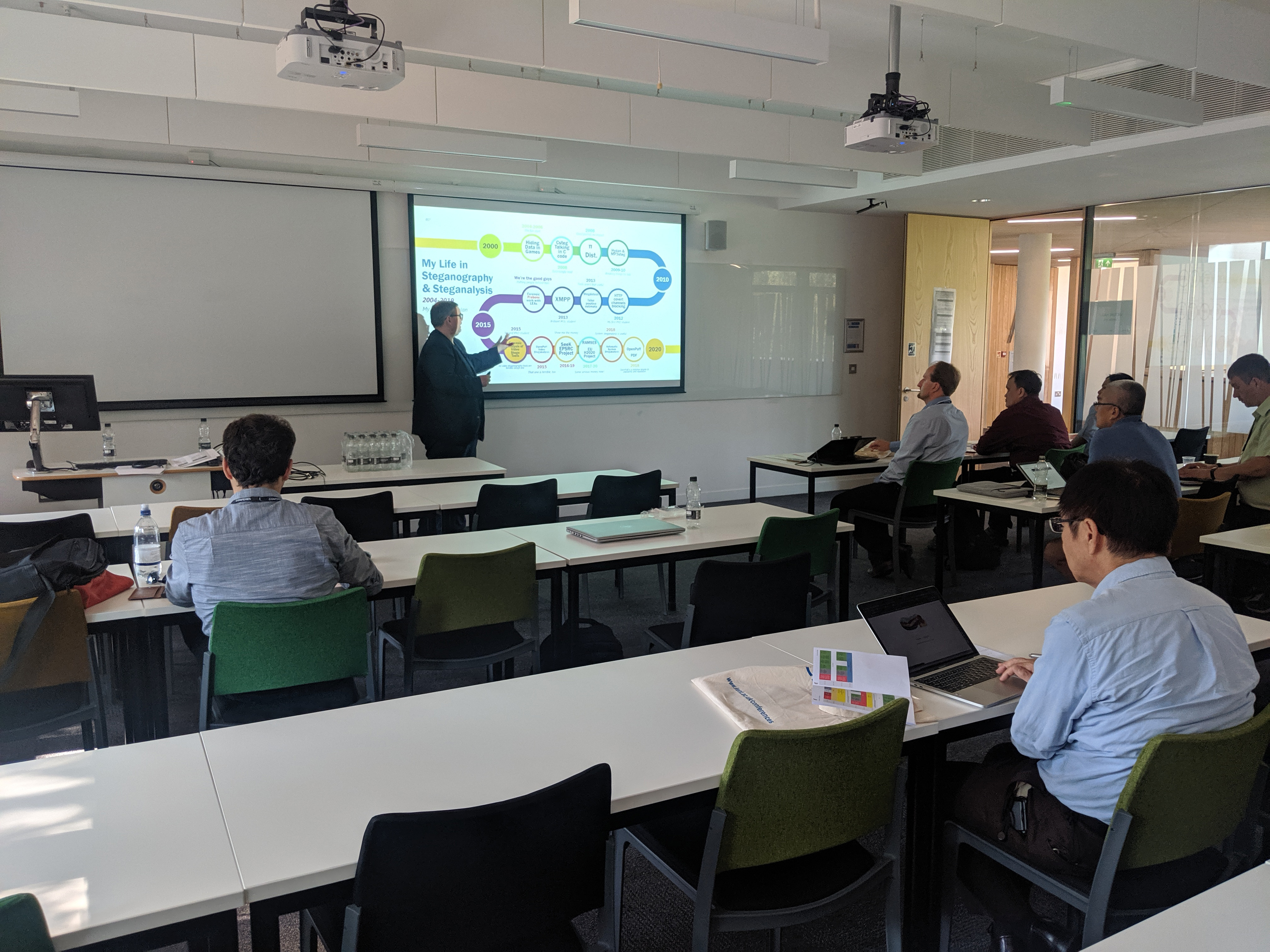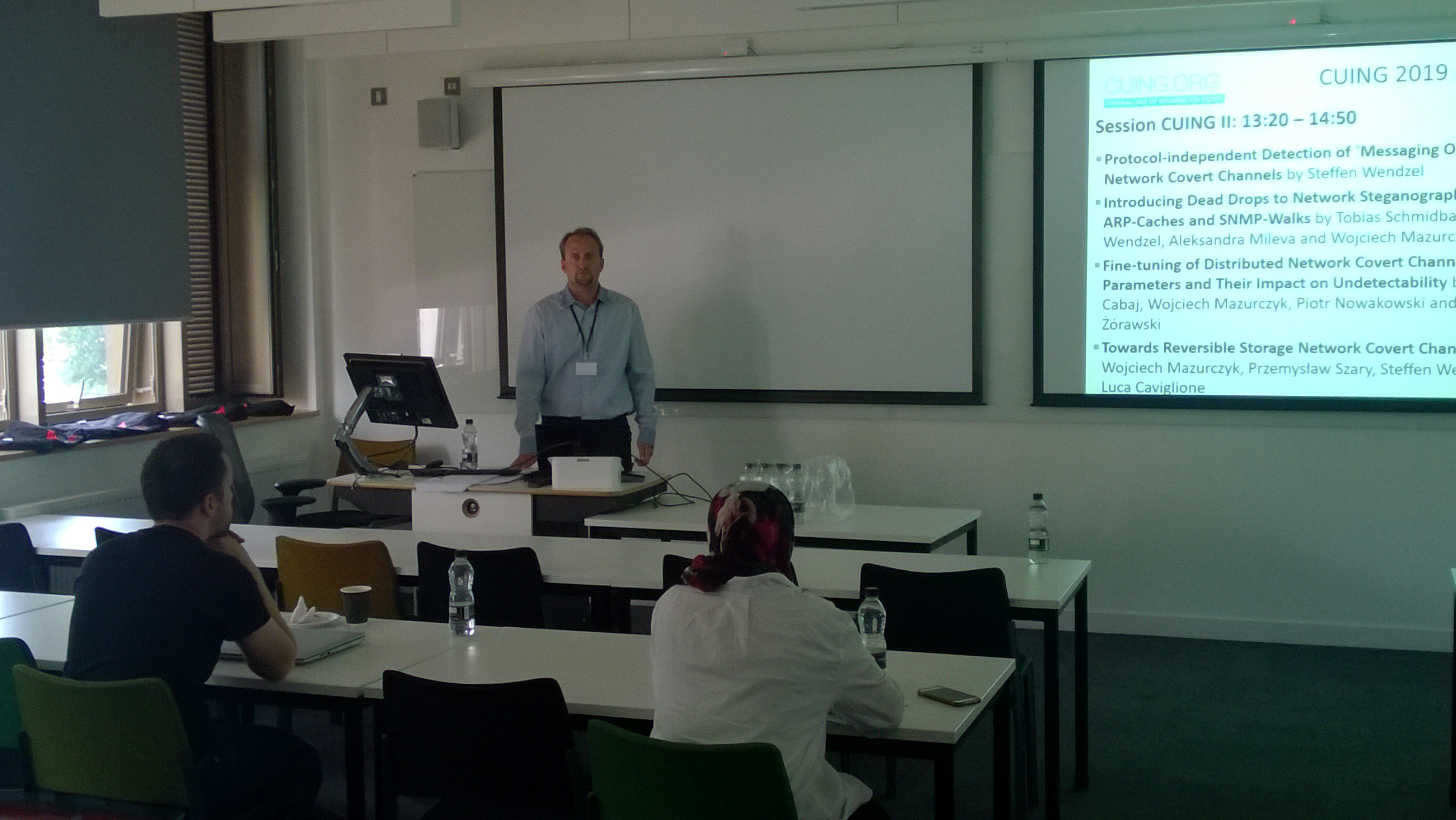Last week, at the ARES 2019 Conference, the SIMARGL project was presented at the CUING 2019 workshop.
What is ARES?
ARES is a medium-sized conference with a focus on state-of-the-art research in the fields of dependability and security. Since 2017, the CUING workshop has been held at ARES, and has presented the latest research on steganography and information hiding to a multi-disciplinary audience.
CUING workshop
The CUING workshop, organised by CUING (a partner in SIMARGL), was full of interesting talks. The first session was headed by a keynote presentation from Prof. Julio Hernandez-Castro of the University of Kent, UK. It was fascinating to hear how Prof. Hernandez-Castro stumbled into the world of steganography some 15 years ago, with many interesting papers produced since. It's clear that the world of steganography is evolving rapidly, and in 15 years things have changed significantly.
In addition to the keynote, there were 8 presentations of scientific papers, all centred around information hiding. These included several network steganography papers, an analysis of Tor onion services and an introduction to the SocialTruth project which aims to detect and mitigate against fake news.
SIMARGL presentation
The SIMARGL project was presented at the workshop, in its first introduction at a major event. Wojciech Mazurczyk gave a talk entitled Towards Reversible Storage Network Covert Channels which is part of the results of the SIMARGL project.
Leaflets were made available to participants, and the most active participants were given free SIMARGL t-shirts! Overall, the workshop was a success for SIMARGL, and several conference participants showed interest in integrating SIMARGL's results into their plans.
Next year, SIMARGL is expected to present at the CUING 2020 workshop. By this time, the results of SIMARGL will become clearer, and workshops participants will be able to actively get involved. We're looking forward to it already!




